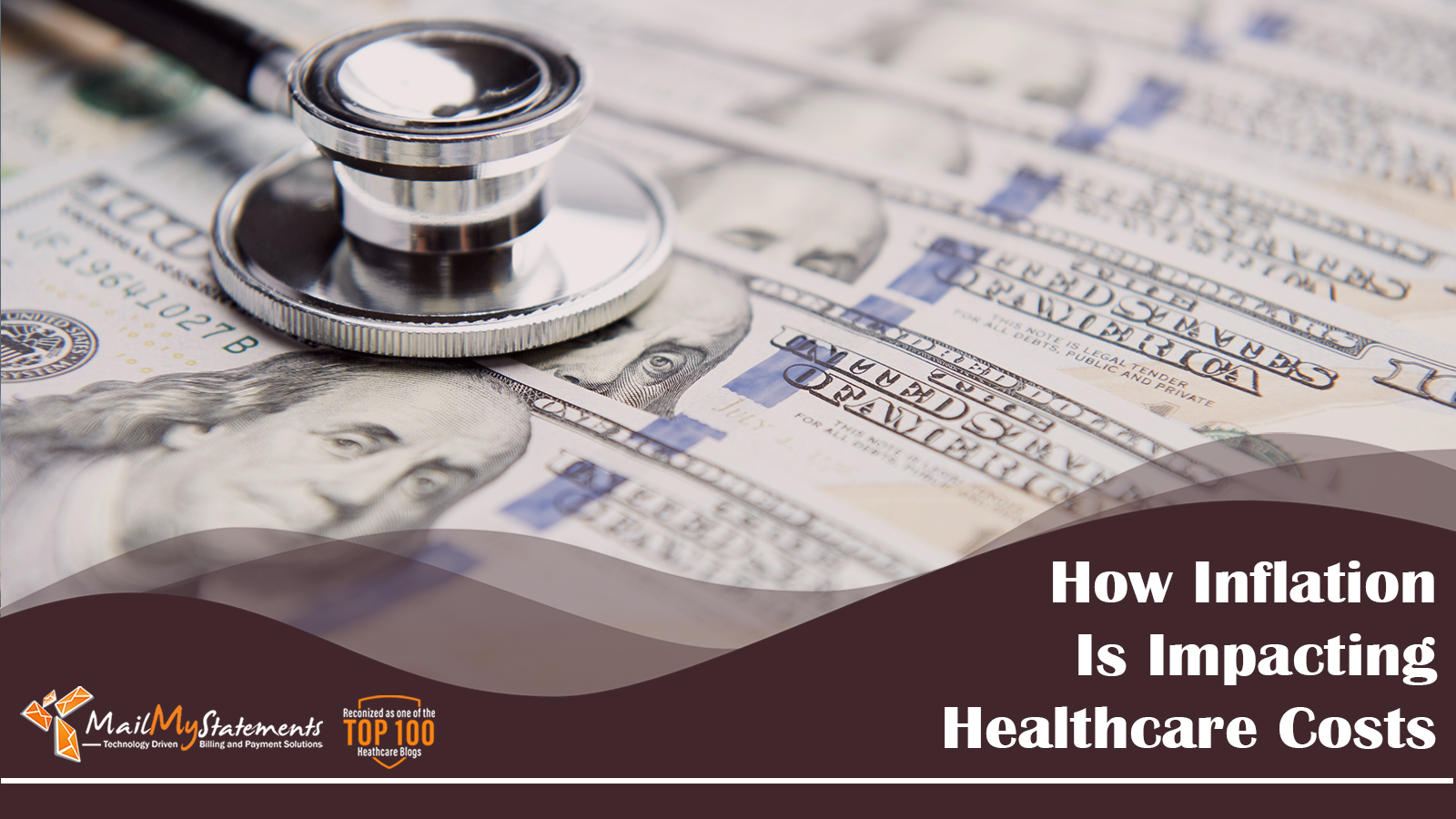How Inflation Is Impacting Healthcare Costs

Healthcare Inflation in 2025: What it Means for Your Practice (and Your Patients)
Conversations about rising costs are everywhere, and healthcare is no exception. While the headlines often focus on groceries and gas, the reality is that medical prices are climbing steadily too. As of July 2025, overall inflation was up 2.7% year over year, while medical care prices rose 3.5%, including hospital services up 5.8%, dental services up 4.8%, and physicians’ services up 3.1%.
At the system level, the U.S. spent about $4.9 trillion on healthcare in 2023, up 7.5% from the prior year. That represents 17.6% of GDP, and spending is projected to keep outpacing the broader economy through the 2030s.
Does Healthcare Inflation Impact Costs?
The answer is yes, and the effects are becoming more visible. Commercial healthcare prices are often locked in via multi-year contracts, so increases pass through with a lag rather than all at once.
Even so, the impact is already here:
- Employer coverage: Average family premiums reached $25,572 in 2024 (up 7% year over year) and single coverage averaged $8,951 (up 6%). Employers expect another 5.8% increase in 2025 health benefit costs, and over half (53%) plan cost-sharing changes such as higher deductibles and copays.
- Marketplace (ACA) plans: Average 2025 premiums rose about 7%, with preliminary filings for 2026 pointing to a median 15% increase, the largest since 2018. Insurers cite rising hospital prices and demand for GLP-1 medications among the main drivers.
- Patients’ out-of-pocket caps: ACA plan limits for 2025 are $9,200 (individual) and $18,400 (family), and Medicare Part D now includes a $2,000 annual out-of-pocket cap.
The Ripple Effects Providers Experience
Healthcare inflation does not occur in isolation. Here are the main impacts on practices and patients in 2025:
1) Rising input costs for providers
Hospital and practice expenses remain elevated. Total hospital expenses rose 5.1% in 2024, with labor accounting for 56% of hospital costs. Payer shortfalls added strain, including $130 billion in Medicare and Medicaid underpayments in 2023. Meanwhile, hospital service prices rose 5.8% year over year as of July 2025.
2) Costs passed along to consumers
Employers and insurers are responding to higher unit prices by increasing premiums and shifting more costs to members, especially as specialty drugs and GLP-1 demand drive pharmacy spending.
3) More patients delaying or avoiding care
Cost remains a major deterrent. 27% of adults skipped medical care in 2023 because they could not afford it, and by April 2025, 35% said they could not afford quality care if they needed it. The numbers are even higher among Black and Hispanic adults.
4) Underinsurance is common
In 2024, 23% of working-age adults were underinsured. These patients often delay care until conditions worsen, resulting in higher downstream costs.
5) Administrative friction and denials
Payers initially denied 11.8% of dollars on hospital-based claims in 2024, an increase from 2023. This creates cash-flow pressure for providers and confusion for patients.
6) Medical debt is not disappearing
Americans hold at least $220 billion in medical debt. A January 2025 CFPB rule that would have removed $49 billion in medical bills from credit reports was blocked by a federal court in July 2025, so reporting practices remain largely intact.
What Providers Can do Now:
1) Increase workforce efficiency with automation and self-service
- Automate revenue-cycle tasks such as eligibility checks, estimates, and claims status.
- Offer digital self-service for scheduling, check-in, statements, and payments to free up staff time.
2) Reduce waste and improve operations
- Standardize supplies, expand group purchasing leverage, and monitor utilization of high-cost drugs and devices.
- Benchmark key throughput metrics to eliminate bottlenecks that create overtime or agency reliance.
3) Strengthen billing and collections
- Provide proactive patient estimates and clear statements.
- Offer flexible payment options such as text-to-pay, autopay, and installment plans.
- Train front-end staff to capture insurance changes and avoid downstream denials.
4) Support patients with affordability and navigation
- Screen for financial assistance early and streamline charity-care applications.
- Help Medicare patients understand the new $2,000 Part D cap and the ability to smooth costs monthly.
5) Prepare budgets and contracts for lagged inflation effects
- Model a 12 to 24-month lag between input-cost spikes and commercial rate realization.
- Build scenarios for GLP-1 utilization, specialty drug spending, and site-of-care shifts.
Quick Stats Snapshot (2024–2026)
- Medical care CPI (YoY, July 2025): +3.5% (hospital services +5.8%)
- National health spending (2023): ~$4.9 T, +7.5% YoY (17.6% of GDP)
- Employer coverage (2024): Family premium $25,572 (up 7%); single $8,951 (up 6%). 2025 employer cost trend +5.8% expected; 53% of employers plan to raise cost-sharing
- ACA marketplace premiums: ~+7% in 2025; prelim. +15% median proposed for 2026
- Patients delaying care: 27% skipped care due to cost (2023); 35% report they could not afford quality care in April 2025
- Underinsured (2024): 23% of working-age adults
- Medical debt: ≥$220 B outstanding; CFPB’s reporting rule blocked in July 2025
- Patient protections: ACA OOP max (2025): $9,200/$18,400; Medicare Part D OOP cap (2025): $2,000
Final Thoughts
Healthcare inflation is a real and growing challenge. Providers face higher costs, more administrative hurdles, and patients with less ability to pay. The good news is that practices can act now to protect both their financial health and patient access. Automation, operational efficiency, streamlined billing, and proactive patient financial support are key strategies.
A partner like MailMyStatements can help reduce administrative burdens, provide patients with flexible payment options, and enable staff to focus on higher-value work. Learn more about our solutions and get started today.
![]()



